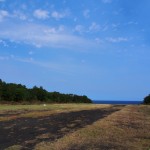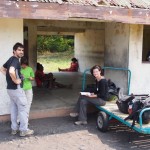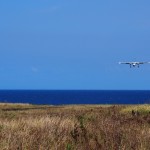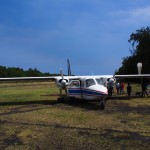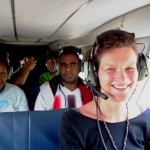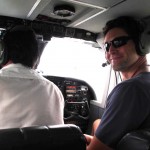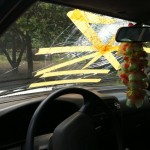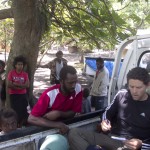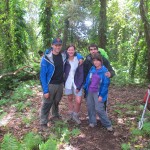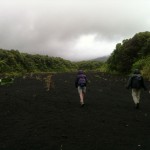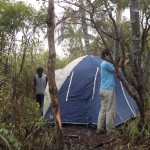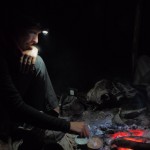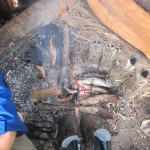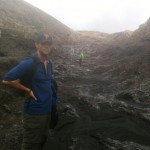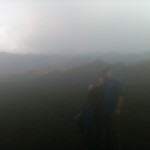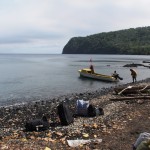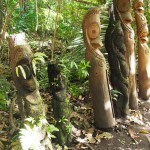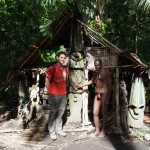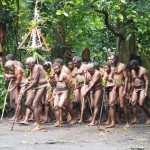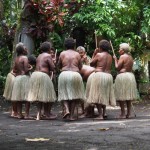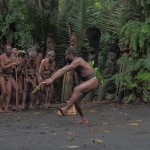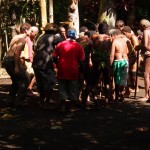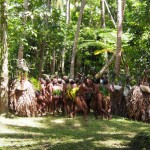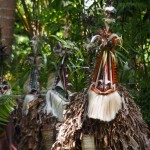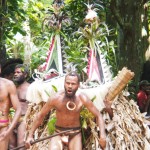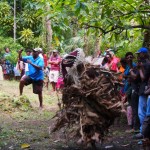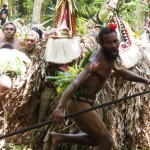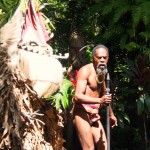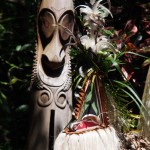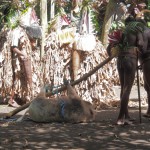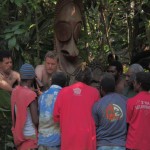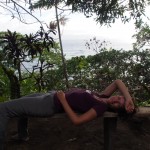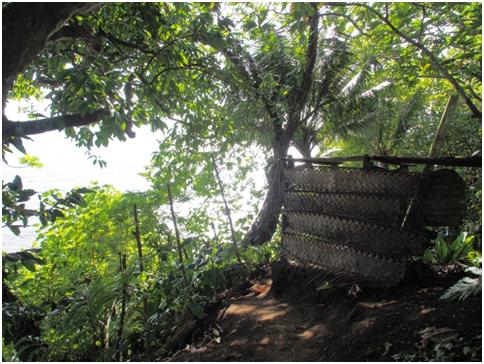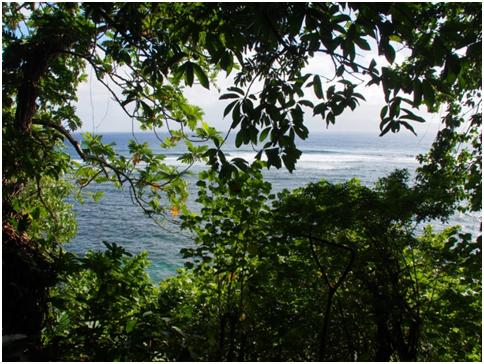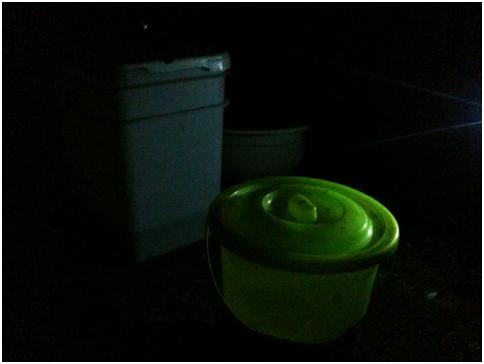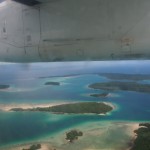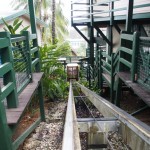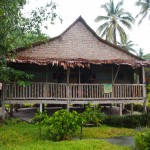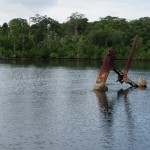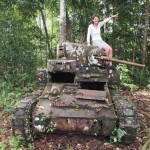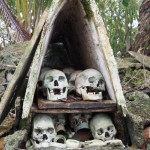We are thinking of creating a new blog category called “Escape from…”
I don’t know how it happens, but Lucy and I will be having a perfectly happy time pootling round some lovely part of the world. Things will be going smoothly: buses will turn up reasonably on time, planes will run (sometimes early), tour guides will fulfill promises made, everything will be great. Then, over the horizon will come … a flight connection perhaps, a planned tour maybe, something from the outside world which was preplanned and Cannot Be Missed. Suddenly, it seems like everyone disappears, everything grinds to a halt and seemingly insurmountable obstacles stand in our way. So it was with Ambrym.
We were relaxing after our epic volcano trek. We had a thoroughly-deserved day off, ensuring that we didn’t miss the plane by the simple expedient of staying in Sam’s guest house (it is not only close to the airport; Sam is the airport). There were no showers, but the ground water was heated by lava and so bucket showers from the well were warm and toasty. We were given as much rice as we could eat. Life was great.
Then our plane was cancelled. “Don’t worry.” says Sam “We will get you off tomorrow.” We waited a day before it was cancelled. “Don’t worry.” says Sam “We will get you off tomorrow.” And then your connection will be the day after, so we can get you to your destination – ooh – three days late. Assuming that your connecting flight runs, which it probably will. Or it might not. Two weeks in Vanuatu you say? Once in a lifetime you say? Oh, so sorry about wasting a quarter of your trip loitering around an airstrip.
Lucy and I are relatively seasoned problem solvers – it was what we used to do for a living, I guess. We ran through the options: we called Air Vanuatu and gave them hell (no dice); I heard about a passing ship and strolled down to the harbor to see if they would give us a lift (deck passengers only, heading in a direction best described as “off the edge of the world”); we looked to see if we could make a short hop to another island and fly from there (no); and … er … that was it. Only one airline flies to Ambrym. Ships call once a week. The neighbouring islands are just as remote. There were no other options. We were stuck. We weren’t going to have time to do half the things we had wanted to do in Vanuatu, and we were deeply p***ed off.
Or not. In our problem solving bag of tricks, there is one that we try never to use. A Nuclear Option, if you will. We hate using it, but it sometimes works where nothing else does. There is a big red button with big white letters saying “Solve, with money”, and we pressed it – our private charter plane arrived soon afterwards.
And yet we had faced yet another difficult decision – due to the complex economics of inter-island flight we had two equally priced (expensive, but not too astronomical) options:
- A nine-seater Islander plane, allowing us to fly out not only ourselves but also our two friends Sergi and Miriam and the late additions of one chronically sick local guy and his wife who desperately needed to make it to the capital for medical treatment; or
- A three-seater REAL LIFE SEA PLANE that would take only Lucy and me, but the pilot of which promised that he would allow me to FLY THE PLANE MYSELF! And damn the others! YEAH!
Sigh. Cue two grateful Spaniards, two extraordinarily grateful islanders and a slightly wistful James. As a consolation prize the pilot of the nine-seater agreed to allow me to sit in the co-pilot’s seat so long as I agreed not to touch anything and not to squeal too loudly when he flew us between the first two islands at 150 feet, buzzing the occasional passing yacht.
We made it.
- Busy, bustling Craig Cove airport. This was taken just before an obstreporous two year old decided that he just HAD to play on the runway
- The first class departure lounge. They were out of champagne that day
- Boy, are we glad to see you!
- Loading up. Let’s not refuel – it’s a little bourgeois don’t you think
- Happy Lucy. Even happier medevac-ed locals
- Welcome aboard ladies and gentlemen. Your first officer today will mostly be acting like an overexcited teenager

